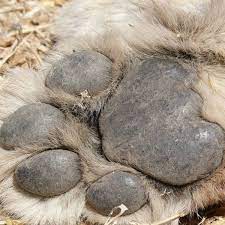
Why you shouldn’t declaw tigers or other big cats
By: Digi Official
August 1, 2023 2:22 AM / 0 Comments ZentaPost Web3 In Brief News Conservation Web3 Community
Declawing house cats to keep them from scratching people and furniture is controversial — and even banned in some countries and areas in the U.S. — but the practice is not limited to house cats. In a new study, researchers looked at the effects of declawing on larger cat species and found that declawing disproportionately impacts their muscular capabilities as compared to their smaller brethren.
Declawing house cats to keep them from scratching people and furniture is controversial — and even banned in some countries and areas in the U.S. — but the practice is not limited to house cats. In a new study, researchers looked at the effects of declawing on larger cat species and found that declawing disproportionately impacts their muscular capabilities as compared to their smaller brethren.
“What people might not realize is that declawing a cat is not like trimming our fingernails; rather, it is removing part or all of the last bone of each digit,” says Adam Hartstone-Rose, professor of biological sciences at North Carolina State University and corresponding author of the research. “Like us, each cat finger has three bones, and declawing is literally cutting that third bone off at the joint.”
The researchers looked at the muscular anatomy of over a dozen exotic cats — from smaller species including bobcats, servals and ocelots, to lions and tigers — to determine the effect of declawing on their forelimb musculature.
They measured muscle density and mass, and also examined muscle fibers from both clawed and declawed exotic cats. They found that for the larger species declawing resulted in 73% lighter musculature in the forearm’s digital flexors. These muscles are involved in unsheathing the claws. They also found that overall, forelimb strength decreased by 46% to 66%, depending on the size of the animal, and that other muscles in the forelimb did not compensate for these reductions.
“When you think about what declawing does functionally to a housecat, you hear about changes in scratching, walking or using the litter box,” says Lara Martens, NC State undergraduate student and lead author of the research. “But with big cats, there’s more force being put through the paws. So if you alter them, it is likely that the effects will be more extreme.”
This is because paw size and body mass don’t scale up at a 1:1 ratio. Paw area increases at a slower rate than does body mass (which is proportional to volume), so larger cats have smaller feet relative to their body size, and their paws must withstand more pressure.
“Additionally, big cats are more reliant on their forelimbs — they bear most of the weight, and these bigger cats use their forelimbs to grapple because they hunt much larger prey,” Martens says. “So biomechanically speaking, declawing has a more anatomically devastating effect in larger species.”
“As scientists, it is our job to objectively document the effects of this surgery on the animals,” Hartstone-Rose says, “but it is hard to ignore the cruelty of this practice. These are amazing animals, and we should not be allowed to cripple them, or any animals, in this way.”
The work appears in Animals. NC State undergraduates Sarah Piersanti, Arin Berger, and Nicole Kida, and Ph.D. student Ashley Deutsch, also contributed to the research. The work was done in partnership with colleagues from Carolina Tiger Rescue, a sanctuary that rescues exotic carnivores, especially big cats, who have often been neglected or mistreated.
Story Source:
Materials provided by North Carolina State University. Original written by Tracey Peake. Note: Content may be edited for style and length.
Journal Reference:
- Lara L. Martens, Sarah Jessica Piersanti, Arin Berger, Nicole A. Kida, Ashley R. Deutsch, Kathryn Bertok, Lauren Humphries, Angela Lassiter, Adam Hartstone-Rose. The Effects of Onychectomy (Declawing) on Antebrachial Myology across the Full Body Size Range of Exotic Species of Felidae. Animals, 2023; 13 (15): 2462 DOI: 10.3390/ani13152462
Cite This Page:
North Carolina State University. “Why you shouldn’t declaw tigers or other big cats.” ScienceDaily. ScienceDaily, 31 July 2023. <www.sciencedaily.com/releases/2023/07/230731170156.htm>.
